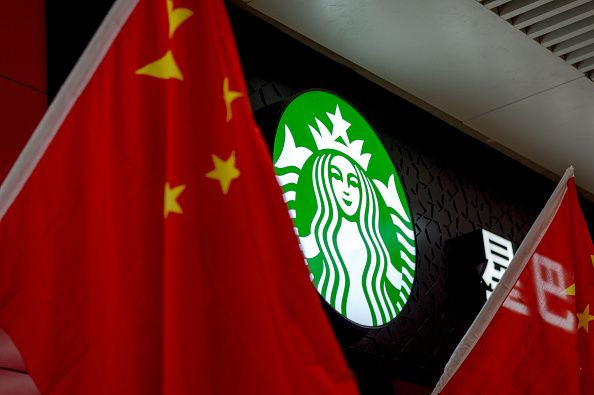Starbucks Corporation (SBUX) Earnings Preview: China On The Horizon, Home Delivery Starts In US

Starbucks Corporation (NASDAQ:SBUX) has a lot brewing. The world’s largest coffee roaster is expanding aggressively in China while rolling out home-delivery, wine-bar evening service and upscale coffeehouses to invigorate U.S. sales. And it’s now in full control of its operations in Japan, one of the company’s largest markets. These and other moves are expected to give the Seattle-based chain its seventh consecutive year of revenue and profit growth.
“We view positively the company's expansion into baked goods and other beverages, such as tea and orange juice,” Standard & Poor’s equity analyst Efraim Levy said in an April 18 research note. “Additionally, we believe the company is in the early stage of store expansions in international markets, particularly China, India and Russia.”
Two weeks after the company announced a 2-for-1 stock split, its first since 2005, Starbucks will announce its fiscal second-quarter results after markets close on Thursday.
Analysts polled by Thomson Reuters predict Starbucks will grow revenue 16.9 percent, to $4.53 billion, in the quarter ended March 31 compared with the same quarter last year. Net income is expected to rise 15.5 percent to $493 million. Per share earnings may increase 17.9 percent to 33 cents.
The company plans to spend about $1.4 billion this year, largely to add 1,650 directly owned or franchised stores globally, including 850 in China and the rest of the Asia-Pacific region, where it added 800 stores last year. China, where it is viewed as a premium retail experience, is a particular focus. Unlike in the U.S., where the company’s Siren logo now adorns highway rest stop gas stations and shopping mall kiosks, Starbucks lures wealthier clientele in the 86 Chinese cities in which it operates.
"China, our largest market outside the United States, is a big part of our story, and we are well on our way to achieving our goal of having 3,400 stores in China by fiscal 2019,” Starbucks boss Howard Schultz said in a January conference call.
Last month, the company announced it was teaming up with Tingyi Holding Corp. (HKG:0322) to expand Starbucks’ ready-to-drink bottled coffees. The move will include developing China-specific beverages to sell in retail outlets to cash in on this $6 billion packaged beverage segment and the country’s growing consumer class. Starbucks already sells its packaged products in thousands of Chinese stores, so this tie-in will bolster that business.
In September, the company announced it was acquiring the remaining 60.5 percent share of Starbucks Coffee Japan, Ltd. (Starbucks Japan), giving it full control of 1,000 stores. The company has said some of the one-time charges from that acquisition would spill over into the second quarter, but afterward analysts expect the deal to improve the company’s overall performance in Asia.
Same-store sales growth -- an important retail metric that gauges performance of older stores -- has been a strong 5 percent over the past two quarters. Investors will look to see if the company’s price increases last year will adversely impact revenue. So far, the consensus is it won’t, and store-sales growth is expected to tick up to 5.1 percent.
But the company seems aware that in North America it’s becoming just another place to buy coffee as its main rival Dunkin’ Brands works to lure customers away.
Starbucks has already begun a pilot program to fill empty chairs during its evening downtime by converting some U.S. stores into wine bars. Now it’s toying with deliveries at select outlets in New York and Seattle. If all goes as planned, the company hopes to expand U.S. delivery service nationwide by the end of 2016.
Last month, Starbucks expanded its mobile order and payment program to 500 more stores in the Pacific Northwest and plans to expand it to all U.S. locations by the end of next year. Starbucks grew revenue 10.5 percent to $16.45 billion in 2014. Net income jumped 20.2 percent to $2.07 billion. Earnings per share rose from $1.13 to $1.36. The company has reported revenue and profit growth for six consecutive years.
© Copyright IBTimes 2025. All rights reserved.






















